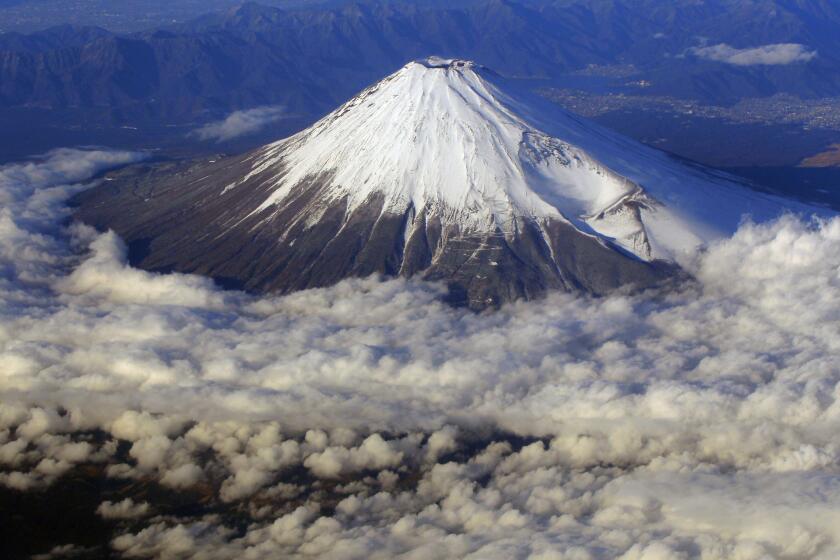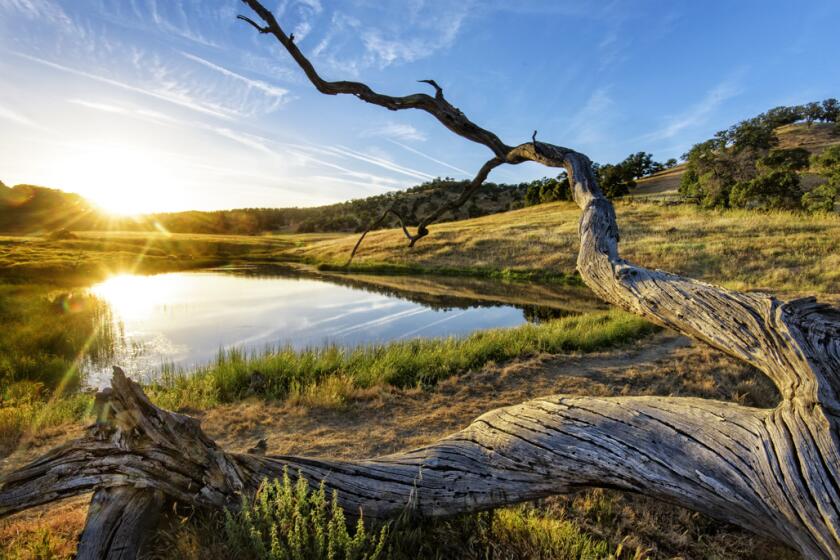Canyon expose
Drought is slowly emptying Lake Powell and reversing the flooding in scenic Glen Canyon, achieving a goal sought by environmentalists and creating new recreational opportunities for hikers, photographers and anglers.
The Colorado River began filling Lake Powell when Glen Canyon Dam was completed in 1963 on the Utah-Arizona border, creating the second largest reservoir in the West.
“[It] ruined a very beautiful place,” says Kyle Walker, owner of Glen Canyon Kayak Guides. “But they created another beautiful place, and right now we’re teetering on the ability to kind of look at both. It’s a very unusual time.”
After five years of record-setting drought, the water lies 120 feet below a chalky ring that marks its former level. Water no longer snakes back into scores of side canyons along the Colorado River. The lake is about 160 miles long, 35 miles shorter than it was at full pool. The dry marina at Hite closed. Water is receding from Last Chance Canyon to reveal scenery submerged long ago.
“To me the lake was a sad place, like a graveyard” after water covered Glen Canyon, Utah photographer Jim Kay says. “It was a photographer’s paradise down there,” he recalls.
Kay has abandoned his boycott of the reservoir and rediscovered more and more of the canyon. He recently visited the Cathedral in the Desert, a giant sandstone chamber, much of which recently resurfaced. “I’ve seen all the old photos,” he says. “I never thought I’d see it in my entire life, and now next spring” it might come completely back.
Steve Ward has lived in Page, Ariz., near the shores of Lake Powell, for 35 years and says that it’s now possible to get a glimpse of Glen Canyon as it once was.
“I don’t know how many people have asked me through the years, ‘What’s it like down there? What was this canyon like before the water got there?’ Well, now people are getting a chance to see for themselves,” Ward says.
Lake Powell is one of the West’s premier fisheries, and 2 million houseboaters, skiers and anglers visit it annually. Now it may be getting even better. As the water level drops, sediments once locked in the depths are stirred by wind and waves, adding nutrients for fish. Last year, the lake yielded a 60-pound striped bass, and the lake-record smallmouth bass was caught three years ago. “We have the potential for a world record in the next couple years,” says Wayne Gustaveson, a Utah Division of Wildlife Resources biologist.
But droughts are cyclical, and if heavy snows return to the Rockies this winter, runoff could quickly refill the reservoir and drown many canyons, red rock cliffs and sandy beaches. This might be the last chance to see much of Glen Canyon for 35 more years.
Spring runoff was half of average, enough to raise the water level by 7 feet and keep all but one of the reservoir’s boat launches open for this holiday weekend. But by the end of summer, the lake is expected to drop 6 to 10 feet below current levels -- low enough to potentially close two major boat ramps and force the National Park Service to extend launch ramps at other marinas for the third year.
Lake Powell provides water to downstream states, principally California and Arizona. However, if drought continues through 2007, the lake could drop so low that Glen Canyon Dam would be unable to generate electricity, according to the Bureau of Reclamation.
Even if normal precipitation returns to the Southwest, it will take at least a decade until Powell refills, officials say.
Meanwhile, Southwestern states and cities are bracing for drier days ahead. Arizona is injecting Colorado River water into underground aquifers for future use, Las Vegas is ripping out acres’ worth of frontyards and there’s even talk of raising Hoover Dam, downstream from Lake Powell, to store more water in Lake Mead during wet years.
Sign up for The Wild
We’ll help you find the best places to hike, bike and run, as well as the perfect silent spots for meditation and yoga.
You may occasionally receive promotional content from the Los Angeles Times.



